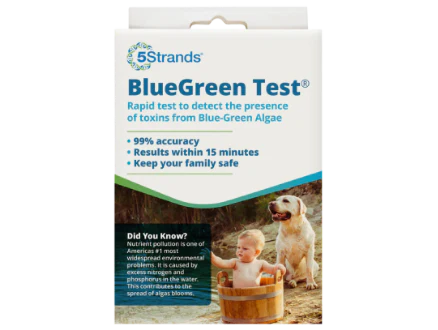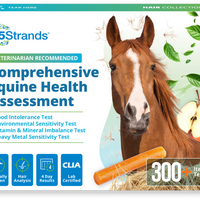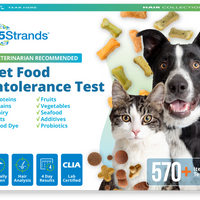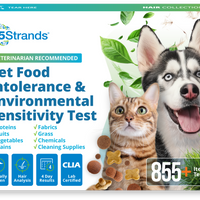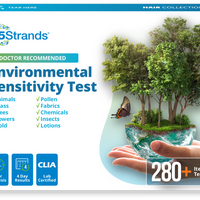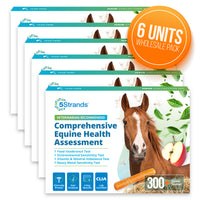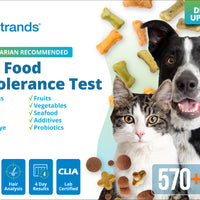If you are a cat owner, it is important that you understand the signs and symptoms that your cat might be experiencing. This will help you to determine whether they are experiencing something that you can help them with directly, or whether you need to seek immediate veterinary help.
Tazz Latifi is a Holistic Pet Food Nutritionist with 20 years of pet retail experience also. She brings her perspective on cat issues as she is an avid feline lover!

Let get started on her new series beginning with the Letter A
Acne – Feline acne
Have you ever wondered what those little blackheads on your cats’ chin are? This is how feline acne generally first presents itself. Clogged pores which are often caused by an overproduction of keratin on the outer layer of the skin. Acne may also appear as bumps and if left untreated can lead to a bloody, itchy mess of inflammation and irritation. There are several factors that can lead to this condition:
- Hormonal imbalances – this symptom may be an early clue to potential thyroid insufficiencies. Check with your vet if other symptoms are present or your kitty is older or has been fed a diet made up of mainly dry foods or lower quality kibble brands which contain more vegetable protein than animal proteins.
- Food sensitivities or environmental sensitivities – A species appropriate diet is your first point of defense with health. Knowing what may be causing your cat to respond adversely is a process. Hyperactive sebaceous glands, poor grooming habits, and a weakened immune system are often secondary factors that present when your kitty is intolerant to foods he is being fed or exposure to environmental stress triggers.
Aggression
Aggression has so many reasons and triggers. It is important for cat owners to play detective and be empathetic to the needs and natural instincts of the felines they share their homes with.
- Emotional or physical pain and discomfort – is your cat constantly licking one or two spots on her body, a bit of self-soothing?
- Does she react to being picked up? Are you and your family members gently handling your cat? Are kids in the home taught to respect and be careful in handling your pets?
- Is your kitty having problems jumping on or off surfaces? Is arthritis setting in, does kitty have an injury?
- Excessive face rubbing, head tilt, or head shaking especially at and around mealtimes? These reactions may all be indicative of pain or discomfort stemming from oral, eye or ear pain.
-
Litter box habits: Are you keeping an eye on your kitty when he is using the litter box? Is he comfortably and constantly urinating and defecating?

- Digestive irritability/excess gas/ constipation/diarrhea are all indicators of potential food intolerances. These are symptoms I rarely see in cats being fed proper high meat, species appropriate, minimally processed diets. The wrong foods may lead to digestive and urinary issues which may lead to secondary behavioral disorders including aggression.
- Multi cat/pet households and life in general with cats - has there been a recent change with the dynamics of your home? A new pet or loss of a pet? New furniture, construction, a new baby, or an illness? These are all factors that may cause your cat to become reactive or perhaps aggressive or even physically ill.
Make it a priority to get your cat to a vet for a full physical and discuss any issues you have discovered in your detective work and reach out to a feline behaviorist for help keeping you and your cat in a happy and safe space.
Allergies
When your cat's immune system overreacts to food, something in their environment, flea bites, or being stung. The immune reaction generally triggers an immediate response like face rubbing, wheezing, coughing, difficulty breathing (this can also be asthma or various other conditions including heart disease) sneezing, runny nose and eyes, diarrhea, excessive grooming, paw biting, reddened inflamed skin, fur loss, acne.
If you scour the web and books for cats and allergies, you will find a slippery and complicated slope. Is the kitty having an actual immune response or a sensitivity that is being categorized as an allergic reaction?
I find food elimination, topical decontamination, environmental decontamination are all the first steps to addressing your cat's minor “allergic” reactions.
If you have been feeding the same type or brand of food/proteins, then it’s time for a re-evaluation of your pet’s diet.
Keeping kitty’s bedding and environment clean and dust free will factor positively for your cat. Yes, please vacuum that rug covered cat tower! It is covered in dust and dander and fur. Please don’t forget to wash her food bowl after EVERY meal and wash her water bowl daily. Pet owners that free feed dry food may forget to wash the cat’s food dish which can lead to a multitude of health issues that can easily be avoided.
Topical decontamination – YES wash your kitty or wipe him down with a damp hypoallergenic wipe or wet towel daily. Cats do need to be groomed, brushed, and bathed. Keeping their nails clipped and their paws wiped will keep the dust bunnies and litter dust from being transferred from their paws and nails onto their face and ears, eyes and into their digestive tract.
Work with your vet (find a good holistic one ☺ ) to pinpoint the reasons behind your cat’s discomfort – it is a complicated and sometimes costly process if you choose to jump in ‘blind’. Start with using a food elimination and decontamination processes outlined here and avoid the guessing game and take a look at the Cornell CVM site for a detailed overview of Allergies in Felines.
If you are not sure if your cat is suffering from a true allergy or if it could be just an intolerance, you can always purchase the 5Strands Food Intolerance Testing kit. It will give you a guideline on where to start with an elimination plan.

Many customers find answers to problems that traditional medicine could not solve. Our holistic approach using energy-based technology allows us to get to the ROOT CAUSE of any dietary discomforts. Create a lifestyle and dietary change that will last. No more prescriptions or bloodwork! Just a HAIR sample. Learn how to provide rotation and moderation to your nutrition plan today!
Anal glands
Is your cat a member of the scooters/butt draggers club?
I hope you say no and skip this part but if your answer is yes, then let’s help your kitty start feeling better and stop leaving skid marks on your couch.
So, what’s happening?
Your kitty’s anal sacs, located at 4 o’clock and 8 o’clock in the anus, may be ‘filling up’ or not emptying/clearing as they normally should each time kitty defecates. Cats that tend to have soft stools or diarrhea are more prone to having difficulties with their anal glands naturally expressing or releasing the fluids in the sacs during bowel movements. Solid/firm (healthy) stools put pressure on the glands from the inside and those glands release the liquid through two pinholes during defecation. These two pinholes can also become clogged by soft stools or diarrhea and cause the anal glands to stay full and cause pain and discomfort.
The longer these glands are not cleared or emptied, the thicker, harder, smellier (smells like 5-day old dead fish) and more irritated the whole area becomes. If this is happening, don’t wait, your kitty needs a vet visit and I don’t recommend a DIY job in this scenario as there may be other underlying health issues that are causing this problem (if chronic).
How to avoid this happening with your kitties? We have a theme…feed a high moisture species appropriate diet. Do your best to avoid cheap kibbles (many of them are seriously overpriced). You may need to include some fiber or digestive enzymes in your pets’ meals.
Annoying
Cats ARE inquisitive. When looking for attention or a response they may come off as being annoying. They may try to get a reaction by knocking objects off counters after they screech a warning meow or walk in front of your screen during an important zoom call with your boss.
The cat owner's big mistake is reinforcing the behaviors we call annoying by acknowledging the kitties at the very moment they are doing the deed (I do it all the time and I can just kick myself for reacting).
How should we go about preventing the irritating (sometimes IG worthy) cats gone wild scenario in our homes during the worst possible times?
Interactive play – Whether your cat is new in your home or a long-time resident he needs to play (yup, just like dogs and kids and us) and there is nothing more satisfying for them than sharing play time with you.
You can make a cat toy with just about anything – my favorite is the fishing pole type toys, especially for the young cats that love to fly and flip. Shoestrings, pant drawstrings, plastic coated picture hanging wires…there are so many options. If your cat is ‘acting’ annoying, he is trying to tell you it’s time to play (or eat or clean their litter box or cuddle) – so listen.

Have you given your cat the tools he needs to look down on you? No, not in a judgmental way. Cats thrive by jumping on tall counters and watching their environment from high spaces. Make sure you provide them with access to plenty of vertical space where they can climb and admire (or judge) the world. This is a great way to get them moving and active and this may even prevent what you call annoying behavior.
If you are easily annoyed, perhaps you need to do some self-reflection while meditating with your kitty on your lap.
Arthritis – (degenerative joint disease)
Arthritis is more common in dogs and rare in cats. There are however a few conditions in cats that are often mistaken for arthritis; poorly bred cats and obese cats are prone to hip dysplasia which may present itself with similar bodily dysfunctions such as inability to jump, mechanical lameness, aggression or lethargy caused by pain from bone-on-bone friction.
Another condition that cat owners often mistake for arthritis is the luxating patella, the kneecap slips or becomes dislocated. There are different levels of severity with this condition, and it can be treated if properly diagnosed. If your cat is having difficulty with or hesitates when jumping up or down or lifting his limb or walks gingerly and seems to hopping or uncomfortable with placing weight on one of his limbs, please don’t ignore this. Your vet will do a full physical exam and along with your observations you can work together to get your cat feeling well and pain free.
Asthma
Asthma is an inflammatory condition of the lower airways. If your cat is wheezing, coughing, or is experiencing hindered breathing, it is imperative that you seek Veterinary monitoring as soon as possible. This condition may be life threatening if not treated immediately. The listed symptoms may not always be related to asthma or bronchitis. Cats suffering from these symptoms may have been exposed to parasites such as feline heartworm or lung worm. Work with your vet to come up with the best treatment and care protocol for your cat’s diagnosis. Here are a few action steps that will positively contribute to your cats’ health if they are suffering from asthma or a lower bronchial disorder.
-Keep your cat’s environment free of dust, smoke, fragrances, and cleaning sprays.
-Use an air filtration system in your home and near your cat's favorite sleeping areas.
-Reduce you cats exposure to stress
- Use dust free litter (Yesterday News, Feline pine, Dr. Elsy Respiratory litter, etc.)
-Feed a wet food diet only. Dry foods cause dehydration which may contribute to asthmatic episodes.
-Groom you cat – brush, bathe, and keep her coat clean and healthy

-Cats with Asthma do well when given Omega -3 (EPA and DHA) fatty acids. Check with your vet to make sure the blood thinning effect of Omega 3’s will not interfere with any medications they are on.
-Eliminate all environmental and food intolerance to help keep inflammation at bay.



